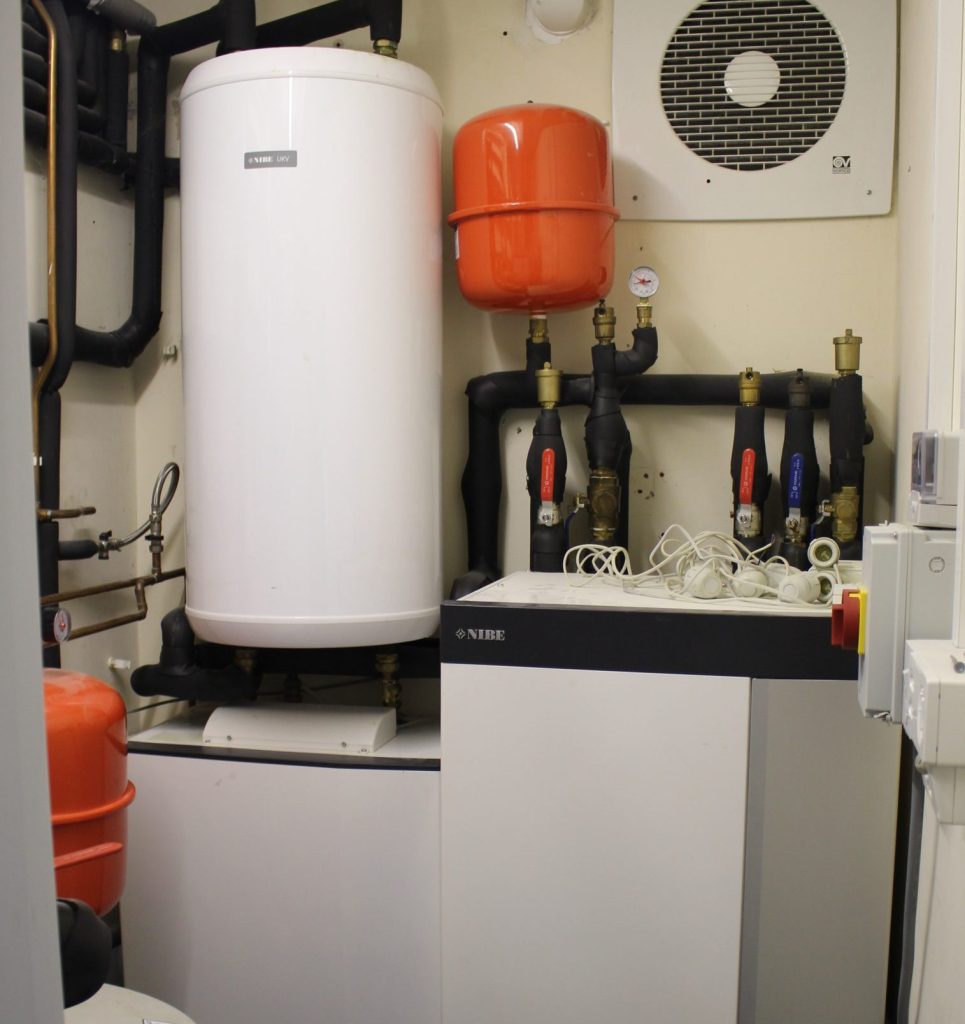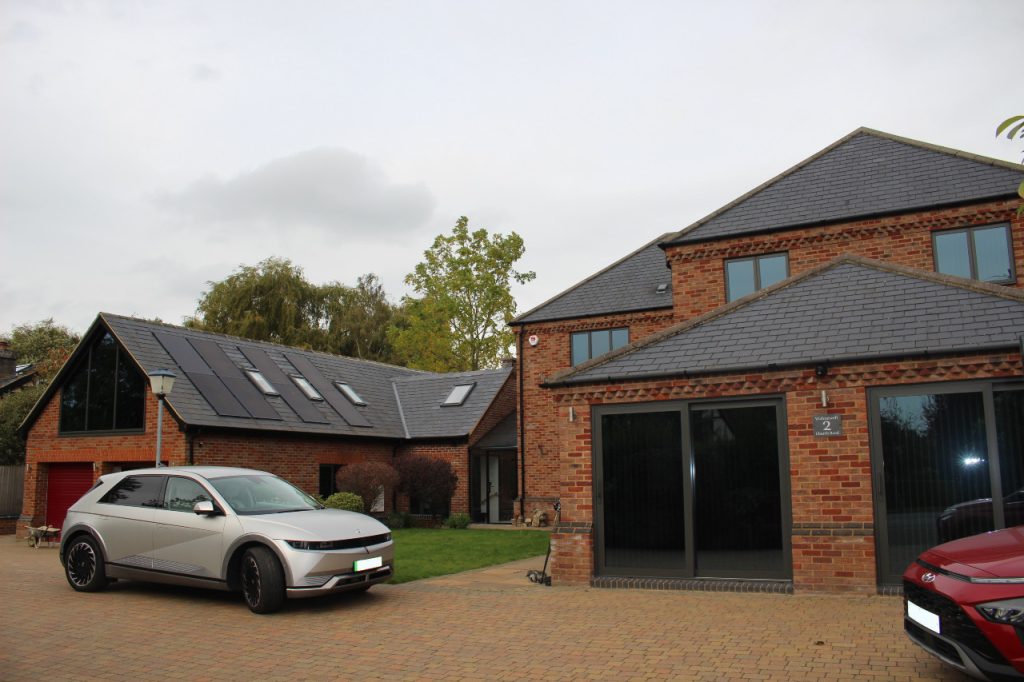Ground Source Heat Pumps: A long-term, renewable heating solution
Ground source heat pumps capture the Earth’s naturally stable temperatures to provide efficient, sustainable heating and hot water. By drawing on renewable thermal energy from the ground, these systems offer a reliable, low-carbon alternative to traditional boilers—one that can yield significant long-term savings.
What kit is required for a system?
A ground source heat pump system involves:
- Ground collector pipework: This loop, filled with water and antifreeze, is buried in the ground. It can be installed as horizontal loops at about 1.2 meters deep or as vertical boreholes reaching depths of up to 200 meters.
- Heat pump unit: About the size of a standard fridge, this indoor unit transfers absorbed ground heat to your home’s heating system.
- Hot water cylinder, buffer tank, and expansion vessels: These components store and manage the heated water, ensuring steady temperatures and reliable performance.

Ground-source Vs Air-Source Heat Pumps
What are the differences?
A ground source system is considerably more expensive than an air source one, but a ground source is usually a better investment in the long term for the following reasons:
Ground source is more efficient than air source, as the ground is warmer than the air in the winter when most space heating is required. Both types of heat pumps use electricity, but an air-source heat pump will use around 18% more electricity than a ground source to produce the same heat.
The expected life of a ground source unit is 20 years, while the expected life of an air source heat pump is 15 years. A significant part of the cost for a ground source system is the ground collector. The ground collector will support many generations of heat pumps. It is an energy well that is likely to last for a very long time.

Frequently Asked Questions about Ground Source Heat Pumps
- What size heat pump do I need?
-
We’ll perform a comprehensive heat loss calculation to specify the correct system size. This ensures the heat pump can meet the full heating demand of your property without oversizing or undersizing.
- How does a ground source heat pump work?
-
A ground source heat pump operates on the same principle as a refrigerator—transferring heat rather than generating it. The system uses a refrigeration cycle to absorb low-temperature heat from the ground and then “upgrade” it to a higher temperature for heating and hot water.
- Do I need a backup boiler?
-
In most cases, the ground source heat pump is sized to cover your entire heating load, eliminating the need for a backup boiler. However, some homeowners choose a bivalent system, where a boiler supports the heat pump during periods of high demand. In this arrangement, the heat pump controls when the boiler kicks in, ensuring efficient, balanced operation.
- What is the best option for my house – boreholes or horizontal loops?
-
Boreholes: More expensive to install but require less surface area. They also offer stable year-round temperatures, making them suitable if passive cooling is desired
.Horizontal loops: More cost-effective but need more land—about twice the total floor area for new properties and up to five times for older homes. Trees and roots can limit available space, so a paddock or field is ideal.
Both boreholes and horizontal loops, when sized correctly, provide comparable efficiency.
- For horizontal loops, what is the difference between slinkies (coils) and straight pipes?
-
Horizontal loops can be either in the form of slinkies; 1 meter-wide coils, typically consisting of 350 m of 32 mm pipes stretched over 50 m, or straight loops (laid in a similar pattern as underfloor pipes). Sized correctly, both systems can provide enough thermal energy to the heat pump. Straight loops extract heat in a more uniform way, and it is therefore usually Better Planet’s recommendation. Sometimes slinkies can be the best option when trenching is complicated.
- For horizontal loops, how deep are the pipes laid and what is the pipe separation?
-
We always recommend laying the pipes at a depth of 1.2 meters. For straight loops, the minimum pipe separation is 1 meter, and for slinkies 5 meters.
- For boreholes, how deep are they and what is the distance between them?
-
For our projects, boreholes are drilled between 80 and 150 meters. The depth is related to the local geology and the type of drilling rig. For heat pumps sized over 6kW, several boreholes are required and they need to be separated by at least 6 meters.
- What are the planning requirements?
-
Most domestic ground source (or water source) heat pump installations are considered permitted development, requiring no formal planning permission. However, if your home is listed or in a conservation area, consult your local council for specific guidance.











